In southeastern Sicily, the Val di Noto quietly dazzles with its baroque architecture and deep sense of history. When I wandered through the eight remarkable towns—Caltagirone, Militello Val di Catania, Catania, Modica, Noto, Palazzolo, Ragusa, and Scicli—I learned they rose from the ashes after a massive earthquake in the late 17th century.
UNESCO recognized the Val di Noto in 2002 because these towns stand as the zenith of late Baroque architecture and art in Europe.
Strolling these historic centers, I felt like I’d stepped into a living museum. The palaces and ornate churches really show off the Sicilian twist on Baroque style.

Each town gives off its own vibe, whether it’s Noto’s sunlit buildings or Modica’s dramatic hillsides. What really gets me is how these treasures have survived, looking nearly as grand as they did three centuries ago.
The Baroque Heart of Sicily: What Makes the Val di Noto Special
The Val di Noto stands out as one of Sicily’s most remarkable cultural treasures. Here, palaces and churches display the heights of Baroque artistry in Europe.
This southeastern slice of Sicily blends artistic significance with a story of resilience and rebirth.
Defining the Val di Noto
The Val di Noto isn’t actually a valley, despite what the name suggests. It’s a historic region in southeastern Sicily, home to several beautiful towns and cities.
I remember noticing how the landscape shifts from coastal plains to rolling hills. It’s a gorgeous backdrop for the architectural jewels scattered throughout.
The main towns here are Noto, Ragusa, Modica, Scicli, Caltagirone, Militello Val di Catania, Catania, and Palazzolo Acreide.
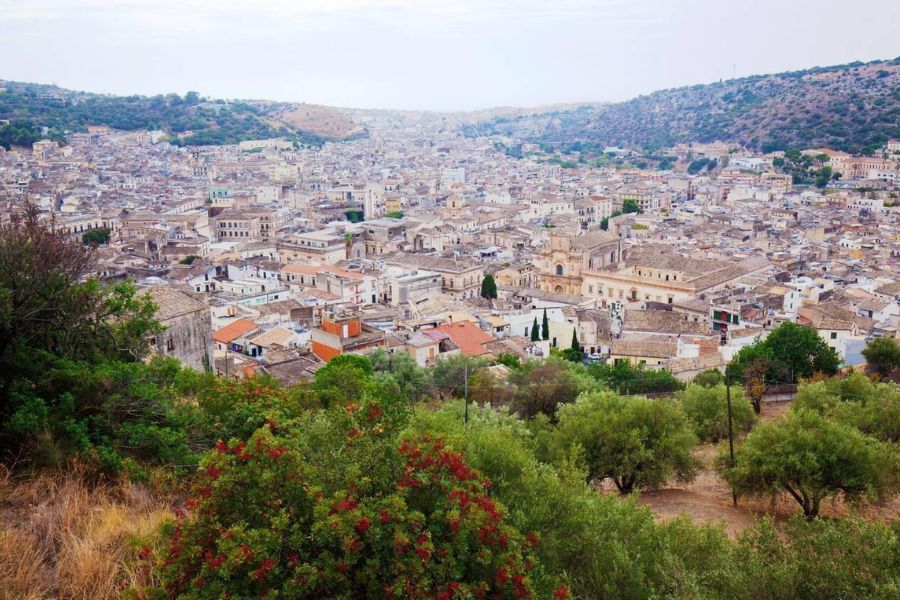
Each town has its own flair, but they all share that unmistakable Baroque splendor. Noto, especially, stands out—almost glowing in the Sicilian sun as the heart of the region.
Late Baroque Towns and Their UNESCO Designation
Since 2002, UNESCO has listed the late Baroque towns of the Val di Noto. They earned this honor for their incredible value and architectural importance.
These towns really represent “the culmination and final flowering of Baroque art in Europe.” I couldn’t stop gazing up at those balconies, the elaborate facades, and staircases that seem to sweep you right off your feet.
Sicilian Baroque isn’t quite like what you’ll find on the mainland. It’s bolder, with curving facades, dramatic contrasts of light and shadow, and playful details.
Some highlights? Noto Cathedral with its grand dome and staircase, the Church of San Giorgio in Ragusa Ibla, and the elegant Palazzo Ducezio in Noto.
The Impact of the 1693 Earthquake
The Baroque beauty of the Val di Noto came from tragedy. In January 1693, a powerful earthquake shattered southeastern Sicily, taking thousands of lives and flattening entire towns.
But instead of rebuilding in the old medieval style, the people here embraced the new Baroque fashion. They turned disaster into a chance to reinvent their towns.
It’s honestly moving to think about all this beauty rising from such devastation. The rebuilding was massive and tightly organized, so the towns ended up with a unified architectural look.
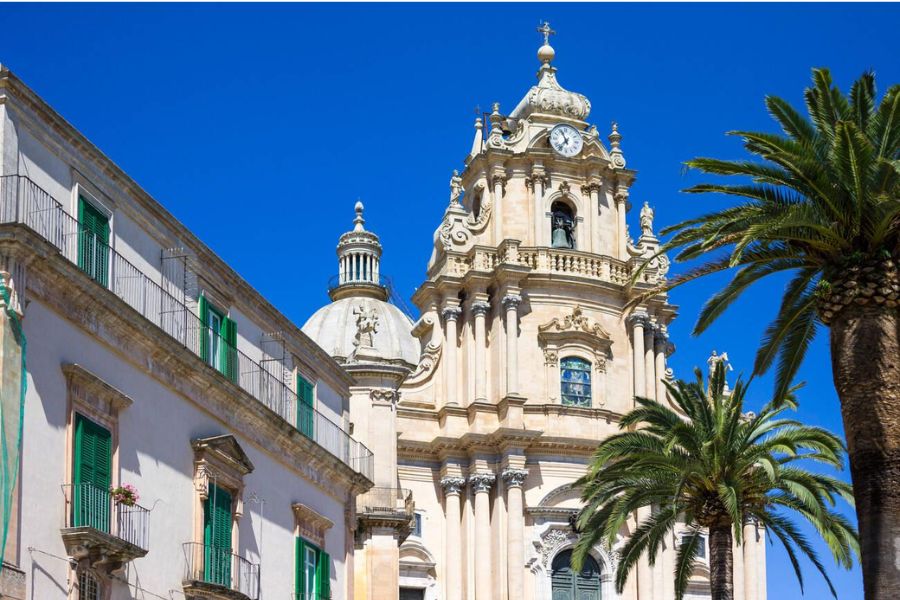
Local architects like Rosario Gagliardi and Giovanni Battista Vaccarini took charge. They designed broader streets, grand piazzas, and impressive public buildings. Thanks to their vision, the Val di Noto got its signature Sicilian Baroque style.
Discovering the Baroque Towns of the Val di Noto
The Val di Noto bursts with some of Sicily’s most stunning baroque architecture, all rebuilt after the 1693 earthquake. Each town brings something different—art, history, and a bit of magic.
Noto: Jewel of Sicilian Baroque
Walking through Noto feels like wandering a giant art gallery under the sky. Those golden limestone buildings practically glow as the sun sets.
Corso Vittorio Emanuele, the main street, is packed with baroque palaces and churches. The Cathedral of San Nicolò towers above everything, its dome lost in 1996 but now beautifully restored.
If you climb to the top, you’ll get sweeping views of the town and countryside. Palazzo Ducezio, with its graceful curved front, serves as the town hall.
If you can, visit in May for the Infiorata di Noto. Artists turn Via Nicolaci into a carpet of flowers—honestly, it’s something you have to see.
Noto’s tight cluster of baroque buildings helped it earn UNESCO status. Don’t skip the Church of San Domenico or Palazzo Nicolaci, with its wild balconies supported by quirky figures.
Modica: An Edible Masterpiece of Chocolate and Culture
Modica tumbles across two valleys, its baroque buildings clinging to the hillsides. The town is famous for two things: breathtaking architecture and chocolate.
The Cathedral of San Giorgio stands at the top of a dramatic staircase. The view from there? Absolutely one of Sicily’s best. Inside, you’ll find beautiful stained glass and ornate chapels.
Modica’s chocolate is unlike anything else. Made with an old Aztec technique brought by the Spanish, it’s grainy and processed at low heat. Shops offer tastings—I’d go for the cinnamon or vanilla flavors.
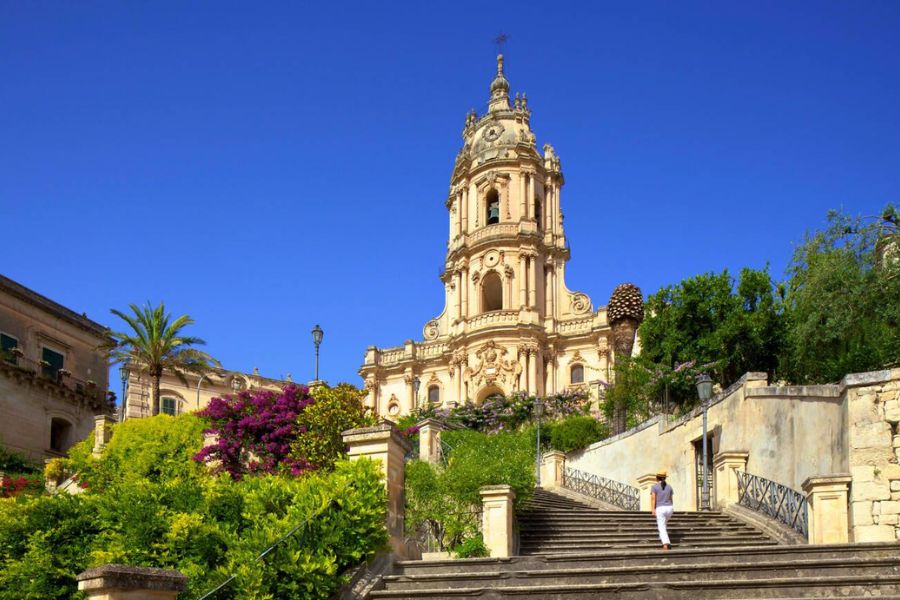
The town splits into Modica Alta (upper) and Modica Bassa (lower). Exploring on foot is a bit of a workout, but every turn reveals another baroque surprise.
Ragusa and Ragusa Ibla
Ragusa might just be the most dramatic town in the Val di Noto. The 1693 earthquake split it into two: Ragusa Superiore (the modern upper town) and Ragusa Ibla (the old heart).
I spent most of my time in Ragusa Ibla, getting lost in its narrow lanes between palaces and churches. The Cathedral of San Giorgio, with its dome and neoclassical front, steals the show.
From the Giardino Ibleo, the valley views are breathtaking. The garden itself is peaceful, with palm trees and old churches.
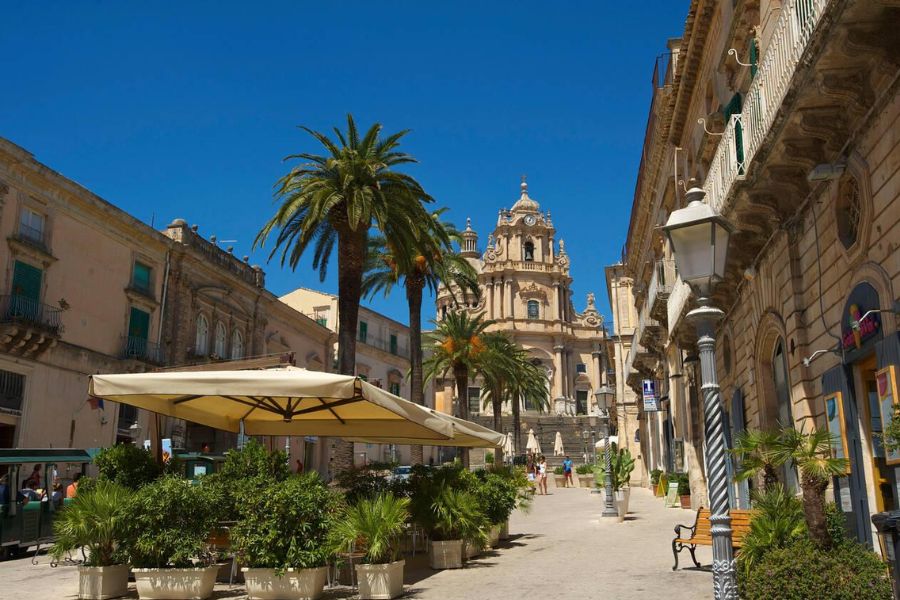
Walking between the two parts means climbing about 300 steps, but the views make it worth it. If you’re not up for the climb, there’s a handy bus connecting both areas.
Scicli: Intimate Charm and Architecture
Scicli feels quieter than the other baroque towns, which makes it extra special. I loved wandering its calm streets, stumbling on hidden architectural gems.
Via Mormino Penna is the town’s main drag, lined with elegant palaces and churches. The town hall, Palazzo Beneventano, is decked out with playful masks and figures.
If you’re a fan of “Inspector Montalbano,” you’ll spot Scicli as the fictional “Vigàta.” The police station from the show sits in the beautiful Palazzo di Città.
The Church of San Bartolomeo stands out, pressed against a limestone cliff. I found Scicli’s setting among three valleys especially lovely, especially when I climbed up to the San Matteo Church for the view.
Beyond the Icons: Other Must-See Heritage Towns
Noto, Ragusa, Modica, and Scicli usually get all the attention, but the Val di Noto hides a few more gems. These lesser-known towns have stunning architecture and fewer crowds.
Catania: Gateway to the Val di Noto
Catania makes a great base for exploring Sicily’s baroque wonders. After the 1693 quake, locals rebuilt the city with dark volcanic stone from Mount Etna.
The Cathedral of Sant’Agata dominates the city center. In Piazza del Duomo, the Fontana dell’Elefante—a quirky black lava elephant—catches everyone’s eye.
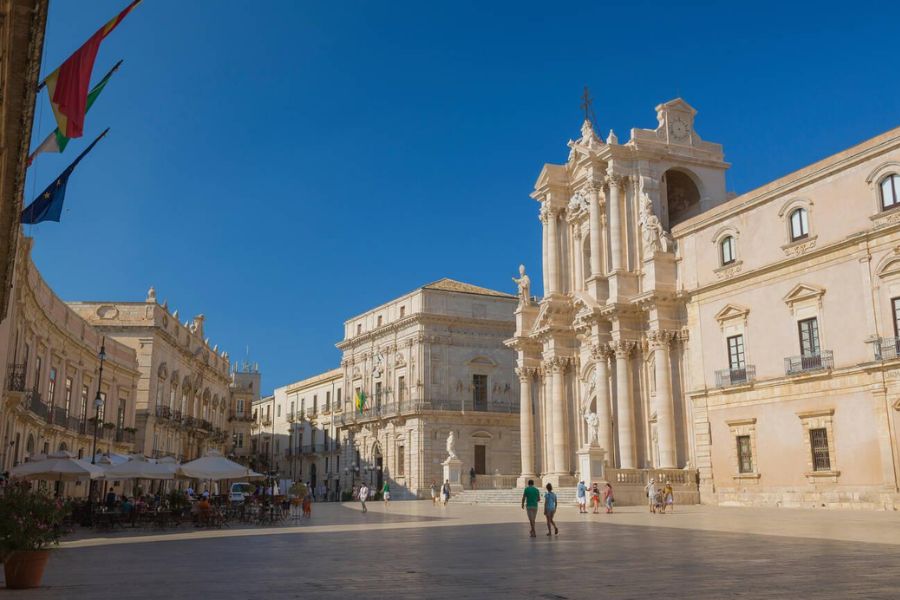
Via Etnea, Catania’s main street, is lined with baroque palaces and churches. Palazzo Biscari is a must-see, with its ornate balconies and curved facade.
Caltagirone: Ceramic Artistry and Baroque Style
Caltagirone charmed me with its mix of baroque buildings and vibrant ceramics. The town’s star is the Scalinata di Santa Maria del Monte, a 142-step staircase covered in colorful tiles.
In May, locals decorate the staircase with thousands of potted plants for “La Scala Infiorata.” July brings the Luminaria festival, when candles light up the steps at night.
Beyond the ceramics, Caltagirone’s churches are impressive. The Cathedral of San Giuliano stands out with its grand facade, and the Chiesa di San Francesco d’Assisi features intricate stucco typical of Sicilian baroque.
Militello in Val di Catania and Palazzolo Acreide
Militello feels like one of the Val di Noto’s best-kept secrets. Its baroque rebirth gave rise to buildings like the Church of San Nicolò and Santa Maria La Vetere. The historic center feels genuinely Sicilian, with barely any tourists.
Palazzolo Acreide brings together ancient Greek roots and baroque flair. Built on the old Greek colony of Akrai, the town offers both archaeological sites and baroque masterpieces.
The Church of San Sebastiano blew me away with its twisting columns and detailed sculptures. If you’re into history, check out the House Museum of Antonino Uccello for a glimpse into traditional Sicilian life.
Sicily’s Natural and Cultural Canvas: Exploring Beyond Baroque
The Baroque towns of Val di Noto are stunning, but Sicily has so much more. The island mixes wild natural beauty with incredible food traditions that pair perfectly with its architecture.
Nature Reserves and Panoramic Landscapes
The Vendicari Nature Reserve really surprised me. This coastal wetland between Noto and Pachino contrasts nicely with the ornate towns. I walked sandy trails, spotting flamingos and herons in the lagoons as old watchtowers watched over the sea.
The reserve has five beaches with crystal-clear waters. Calamosche, tucked between two rocky points, became my favorite for a swim.
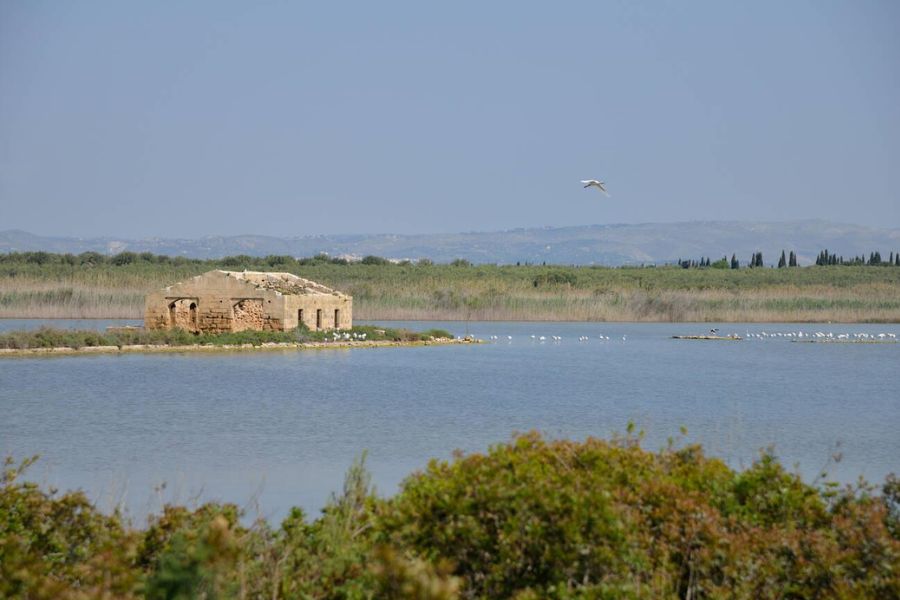
Nearby, the coastline delivers dramatic views where the Ionian Sea crashes into cliffs. Sunrise or sunset here feels magical—the light just transforms everything.
Mount Etna and the Hyblaean Mountains
Mount Etna looms over eastern Sicily—Europe’s tallest active volcano at 3,326 meters. I could watch its shifting moods for hours, from gentle puffs of smoke to the occasional fiery show.
There’s always something to do on Etna:
- Winter: Skiing on volcanic slopes
- Summer: Hiking up to the craters
- Anytime: Riding the cable car for sweeping views
The Hyblaean Mountains, by contrast, are gentler. These limestone plateaus cradle the Baroque towns and offer their own quiet beauty. I loved driving winding roads past olive groves and ancient stone walls.
The Cavagrande del Cassibile gorge is a must—its natural pools are perfect for a dip after a day exploring Baroque towns.
Sicilian Gastronomy and Local Dishes
Sicily’s cuisine tells the story of its tangled cultural roots. In the Val di Noto, I came across dishes that somehow mix Arabic, Spanish, and Italian flavors—honestly, you can’t mistake them for anything but Sicilian.
Local specialties? Here are a few:
- Arancini – Rice balls packed with ragù
- Pasta alla Norma – Eggplant pasta, famously named after Bellini’s opera
- Granita – That icy, semi-frozen dessert—best eaten with a fresh brioche

The coast guarantees insanely fresh seafood. I tried sea urchins in Marzamemi and swordfish in Syracuse, usually paired with crisp local white wines from those volcanic hills.
Markets in every town burst with local produce. You’ll spot bright blood oranges, Bronte pistachios, and cheeses like Ragusano DOP. Sicily’s agricultural bounty honestly rivals its architecture.
Planning Your Journey Through the Val di Noto
If you want to really experience the Val di Noto, you’ll need to plan ahead. The region rewards anyone willing to slow down—each town has its own architectural gems and food traditions.
When to Visit and Travel Tips
Spring (April-June) and early fall (September-October) bring the nicest weather for wandering the Val di Noto. Summers? They’re brutal—July and August can easily hit 95°F (35°C) or more.
Renting a car makes getting between towns much easier, since public transit doesn’t really cover all the bases. Most towns sit just 30-60 minutes apart, so day trips work well if you stay in Siracusa or Noto.
You really need good walking shoes. These hilltop towns have steep streets and plenty of stairs. I’ve noticed that early mornings offer perfect light for photos and far fewer crowds.
Shops usually close for riposo (the Italian siesta) from about 1-4pm, so you’ll want to plan around that. Don’t forget to carry water and slap on some sun protection, even in the shoulder seasons.
Nearby Wonders: Syracusa, Pantalica, and Piazza Armerina
Siracusa (Syracuse) deserves a full day, at the very least. The ancient Greek theater in the Archaeological Park of Neapolis blew me away, and Ortigia island’s Duomo—built right over a Greek temple—stopped me in my tracks.
Just northwest of Siracusa, you’ll find Pantalica. It’s a prehistoric necropolis with more than 5,000 tombs carved into limestone cliffs. The hiking here runs through some wild, dramatic landscapes.
Piazza Armerina is home to the Villa Romana del Casale. The mosaics here—especially the “Bikini Girls” and the hunting scenes—have survived nearly 2,000 years, and I couldn’t believe the detail.
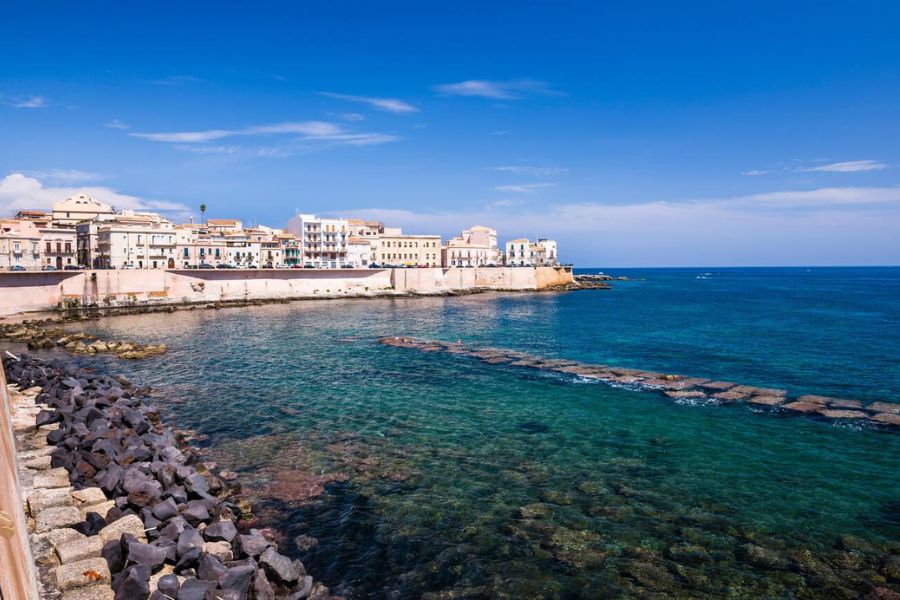
If you love history, Enna’s medieval fortress gives you sweeping views of central Sicily. From Ragusa Superiore, you get a jaw-dropping look down at the older Ragusa Ibla.
Unique Events and Cultural Experiences
May brings the Infiorata in Noto. Artists line Via Nicolaci with elaborate flower carpets, and for three days, this baroque street turns into a wild, colorful canvas. I wandered through it and honestly, it felt absolutely magical.
In July, Siracusa’s ancient Greek theater comes alive with classical performances under the stars. Sitting there, watching a Greek tragedy where people did the same thing 2,500 years ago? That’s something I’ll never forget.
Local food festivals—sagre—pop up to celebrate whatever’s in season. Don’t skip these:
- Chocolate in Modica, made the old Aztec way
- Pistachios from Bronte, right by Mount Etna
- Fresh ricotta packed into cannoli or cassata
- Local wines like Nero d’Avola and Cerasuolo di Vittoria
A lot of towns offer cooking classes. I joined one in Ragusa, and we whipped up caponata and pasta alla Norma with whatever we’d just grabbed from the morning market.

